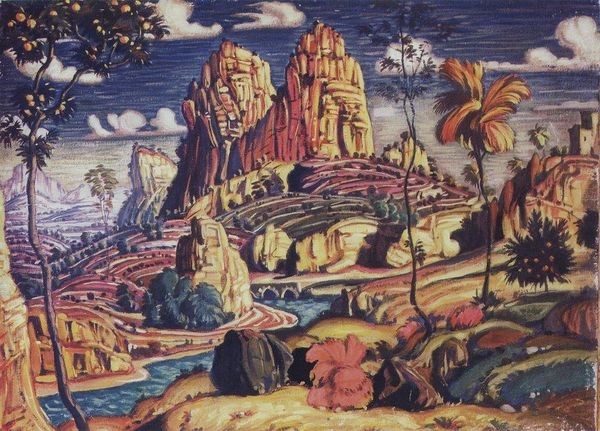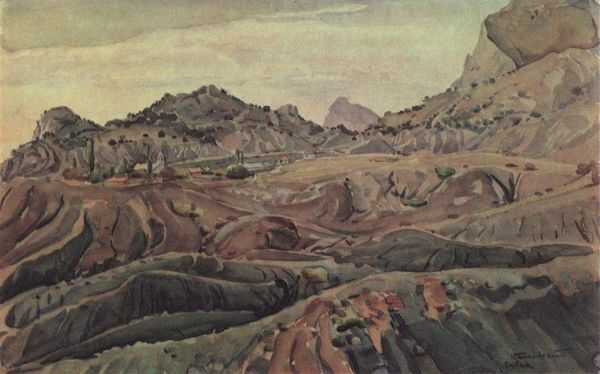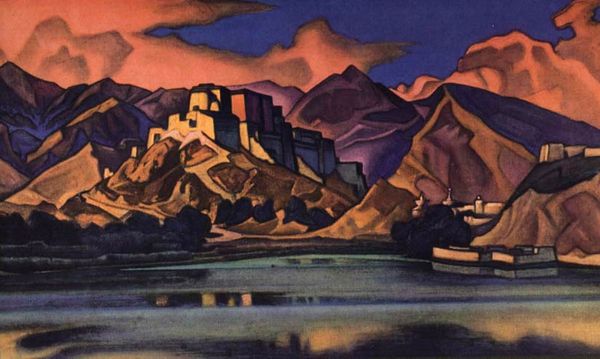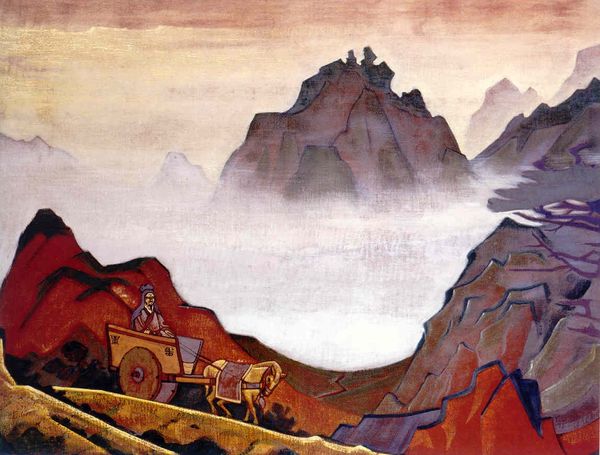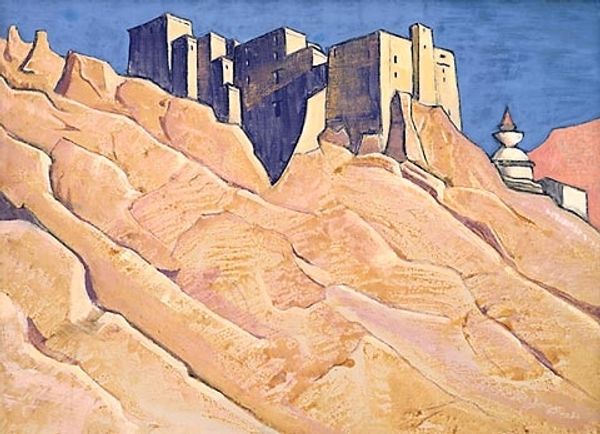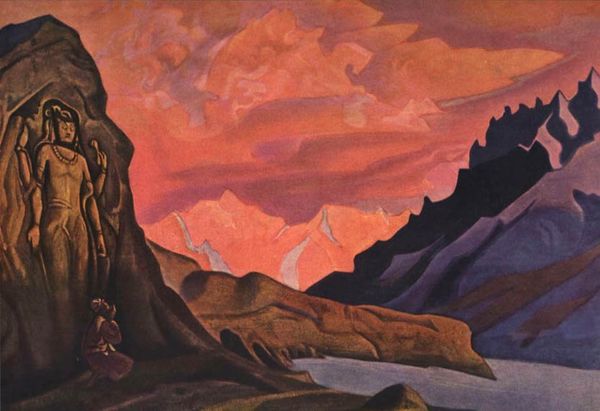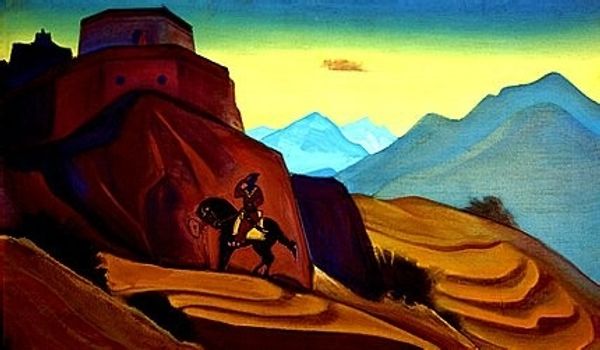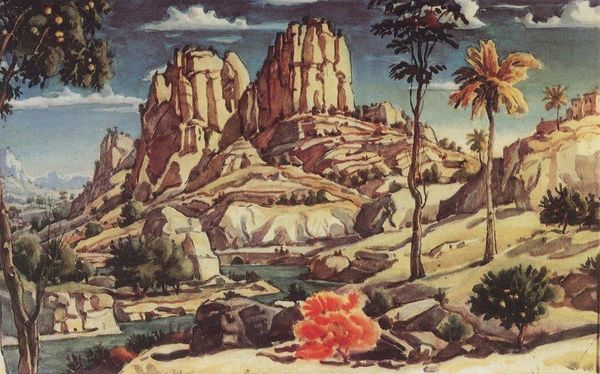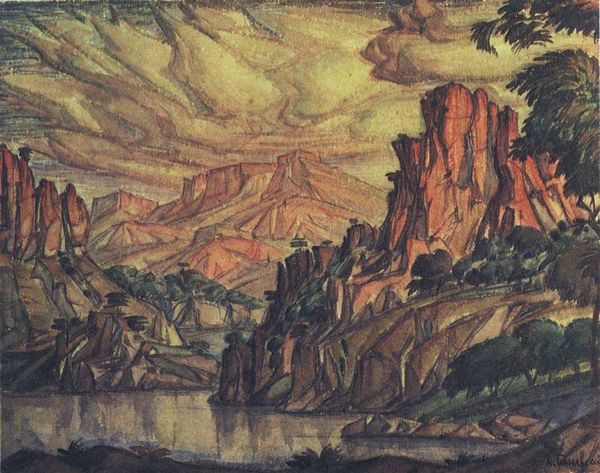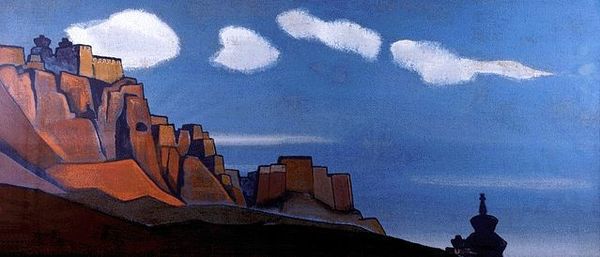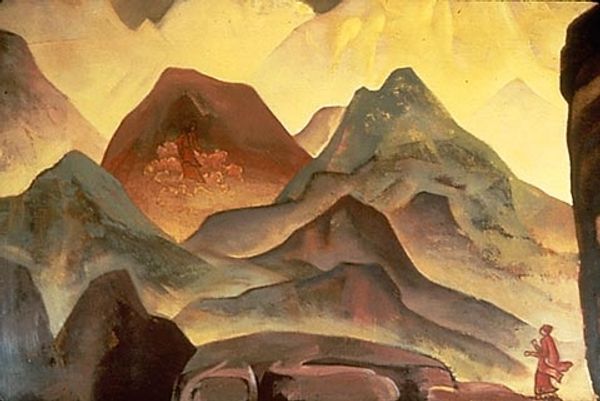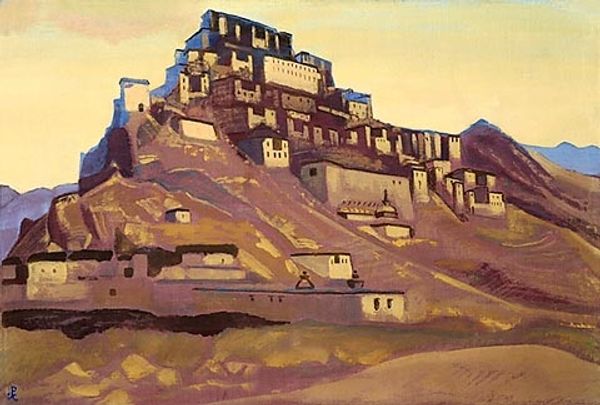
Stronghold of walls 1925
0:00
0:00
nicholasroerich
Nizhny Novgorod State Museum of Fine Arts , Nizhny Novgorod, Russia
Dimensions: 73 x 101.1 cm
Copyright: Public domain
Curator: Nicholas Roerich created this painting, "Stronghold of Walls," in 1925. It is a tempera on canvas, currently held at the Nizhny Novgorod State Museum of Fine Arts in Russia. Editor: The painting evokes a distinct sense of monumentality and tranquility, a quiet solitude. The color palette seems almost deliberately subdued, earthen. What strikes me immediately is the way the architecture is integrated into the landscape—as if carved directly from the same rock. Curator: Precisely. And Roerich was deeply interested in that connection – the very tangible intersection of human labor and the environment. The painting uses tempera, a medium where pigments are bound in egg yolk. This choice adds to the texture of the land. I wonder about sourcing of pigment and the skill that lies within the labor of rendering such monumental and awe-inspiring spaces? Editor: Roerich’s Orientalist lens frames his exploration of Tibetan landscapes. It’s critical to view his work through the lens of colonial gaze and questions around cultural appropriation, examining whose narratives are privileged within this depiction of spiritual and physical terrain. Consider that he depicts Asian artistic culture in his pieces without full cultural context. Curator: A key observation. Consider that it is also his commitment to rendering labor visible—an artistic and philosophical choice reflecting both the Theosophical beliefs that guided his spiritual search, but also a more earthly social engagement. The repeated use of sharp geometrical shapes seems to construct buildings within the landscape that serve as a metaphor for enlightenment through toil. Editor: The composition encourages the viewer to look beyond its apparent visual qualities into underlying social-cultural, economic-political meanings within a complex representation that calls for closer attention of the observer towards history, spiritual beliefs, human relationship and geopolitical context. It also highlights an approach that moves towards art being seen not merely an aesthetic thing but also as carrier and transmitter of a message or information across communities in societies across temporal spaces. Curator: That's certainly the challenge Roerich’s work poses to us, almost a century later: how to reconcile the powerful aesthetics with what they represent, the history of labor they document and how to contextualize their consumption now. Editor: An uneasy reconciliation indeed but one which reveals multiple possibilities for art criticism to explore diverse angles of cultural discourse with complex perspectives and open minds that challenge historical assumptions whilst allowing viewers today take note of our changed awareness.
Comments
No comments
Be the first to comment and join the conversation on the ultimate creative platform.
